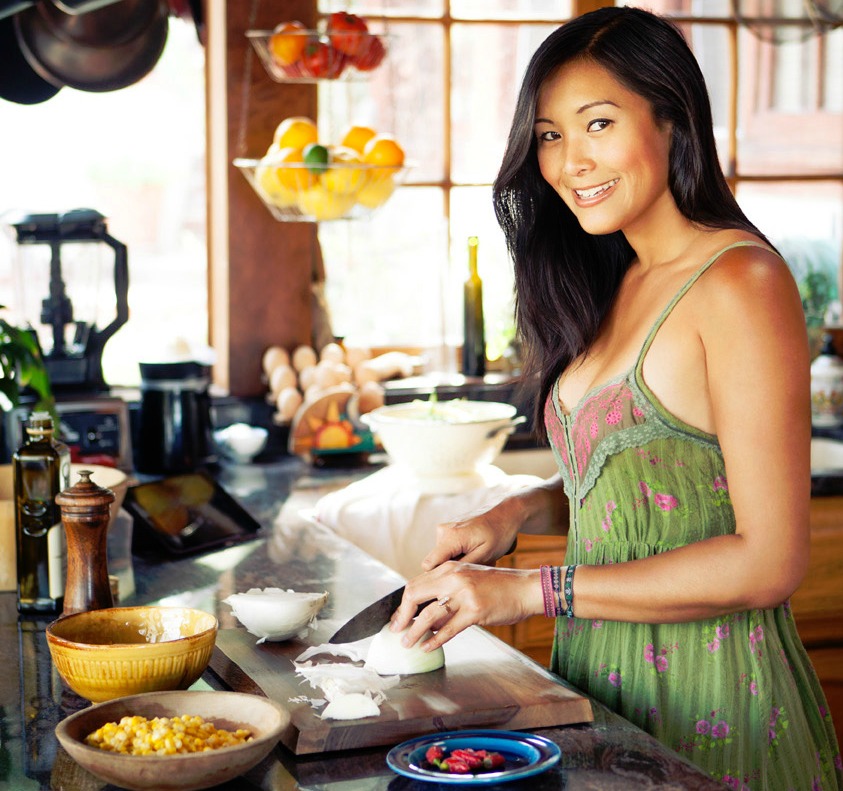Join Us for Waste-Free Cooking Week with Garden Betty's Linda Ly
This is the first piece in our week-long series on waste-free cooking with Linda Ly, founder of GardenBetty.com and author of The CSA Cookbook, which celebrates the art of using the whole vegetable, top to bottom. From those strange-looking bulbs in your CSA box to the verdant vines in your backyard that sometimes grow up to ten feet long, Ly's got fresh ideas for using what you may have previously relegated to the compost pile. (There’s a spicy minty tomato sauce infused with tomato leaves recipe for those backyard vines in Ly’s book).
In an exclusive post for ediblefeast.com, Ly talks about waste-free cooking with the tops and tails of vegetables and the recipes she’s developed while thinking outside the CSA box. We hope it inspires you in the kitchen as you enjoy the season's bounty.
Kale stems, carrot tops, the green leaves on leeks…does this sound like the contents of your compost bin? Or at best, perhaps a batch of homemade vegetable stock?
We usually disregard these odds and ends as scraps, and because we don’t come across recipes for them or hear of people cooking with them, we just assume they’re inedible. We toss out endless bits and bobs from our produce, we peel things that don’t need to be peeled, and we generate a good deal of waste in the kitchen when in reality, those very parts we discard are delicious in their own right.
And I’m not talking about vegetable stock.
I’m talking about fennel fronds and basil blossoms. I’m talking about chard stalks and squash shoots. I’m talking about tomato leaves and pepper leaves, broccoli greens and kohlrabi greens — all the beautiful vegetables we find in our farm shares or grow in our gardens, whose culinary potential have yet to be realized and celebrated in our eating culture.
I want to change what we perceive as edible, and introduce a whole range of unfamiliar vegetables from familiar plants to our everyday cooking. Not only are they sometimes more nutritious than the parts we commonly use, but eating this way, from top to tail, truly opens our eyes to all the possibilities of fresh, whole food.
Take kale, for instance. This time of year, countless kale plants are sending up their flower stalks, signaling the end to a productive season. But the way I see it, there’s a bonus harvest to be had before the plants are pulled from the ground.
Kale buds (the little yellow flowers on kale as well as other brassicas) have a sweet and delicate flavor that I look forward to every spring. Here, they’re tossed with an array of seasonal goodness: freshly shelled peas, spring radishes, radish greens, and scallions. It’s my take on traditional Lebanese tabbouleh, and it makes a light lunch or refreshing side salad. (If your garden is overrun with kale buds, try them in a stir-fry for dinner too.)
Every day this week, I’ll share more tips and more recipes from my new book, The CSA Cookbook, as we cook our way through a community supported agriculture box, farmers’ market, or backyard harvest with as little waste as possible.
Let’s celebrate #wastefreecooking without resorting to compost or soup stock! My hope is that the book will inspire you to be a little more mindful and a lot more adventurous in the kitchen.
We're giving away a copy of The CSA Cookbook every day this week on Facebook. Enter to win by liking our #wastefreecooking post of the day.










